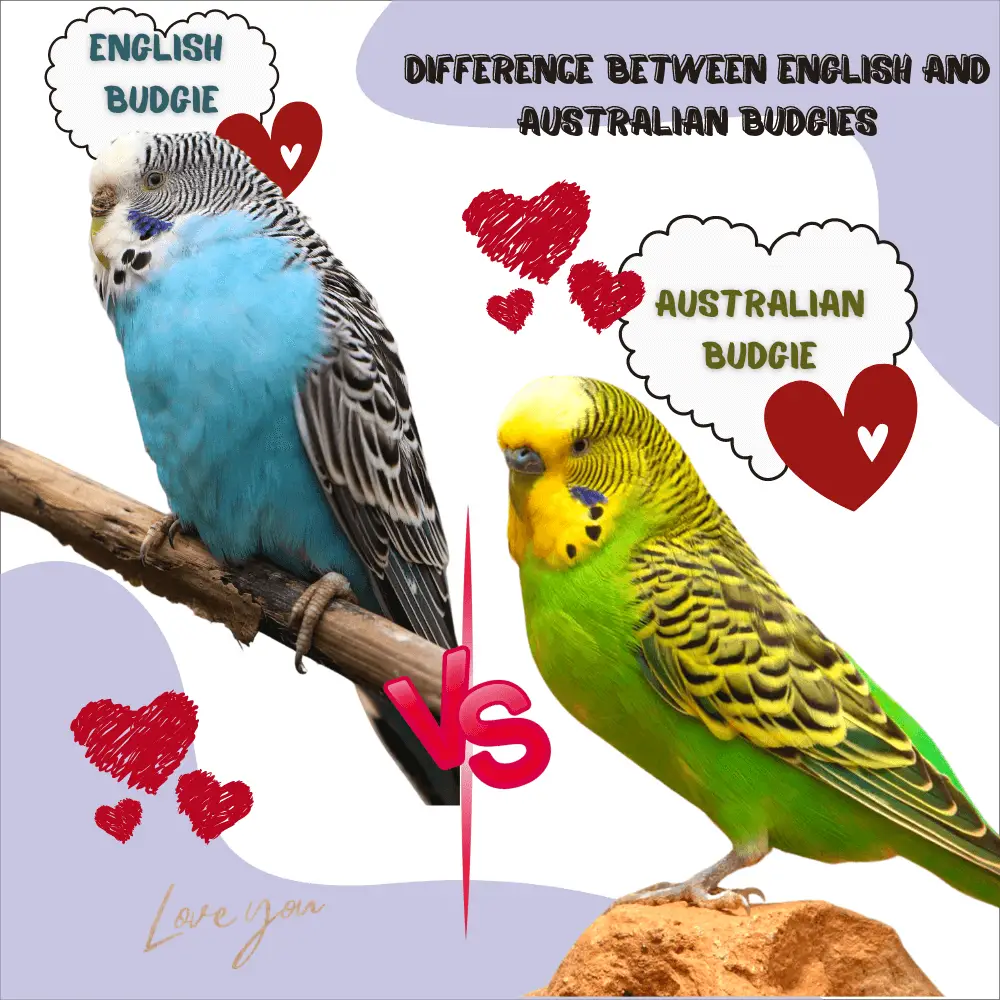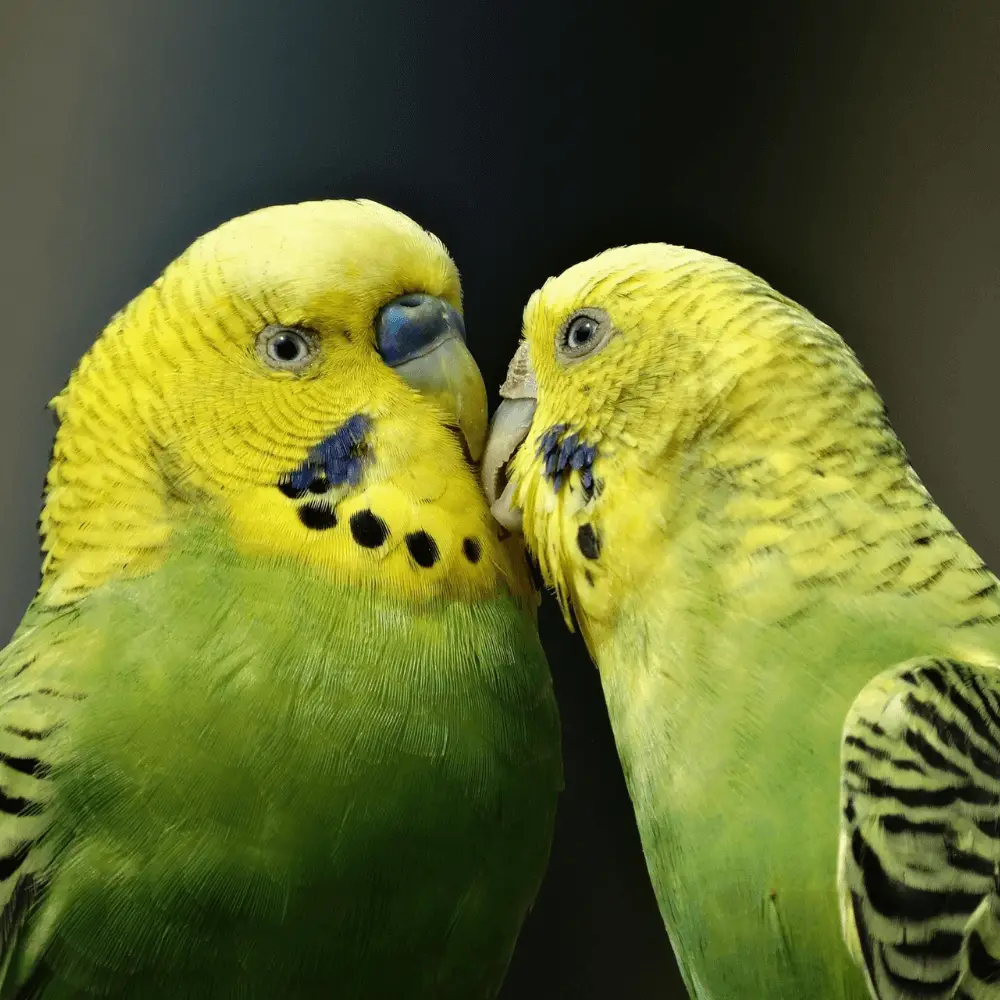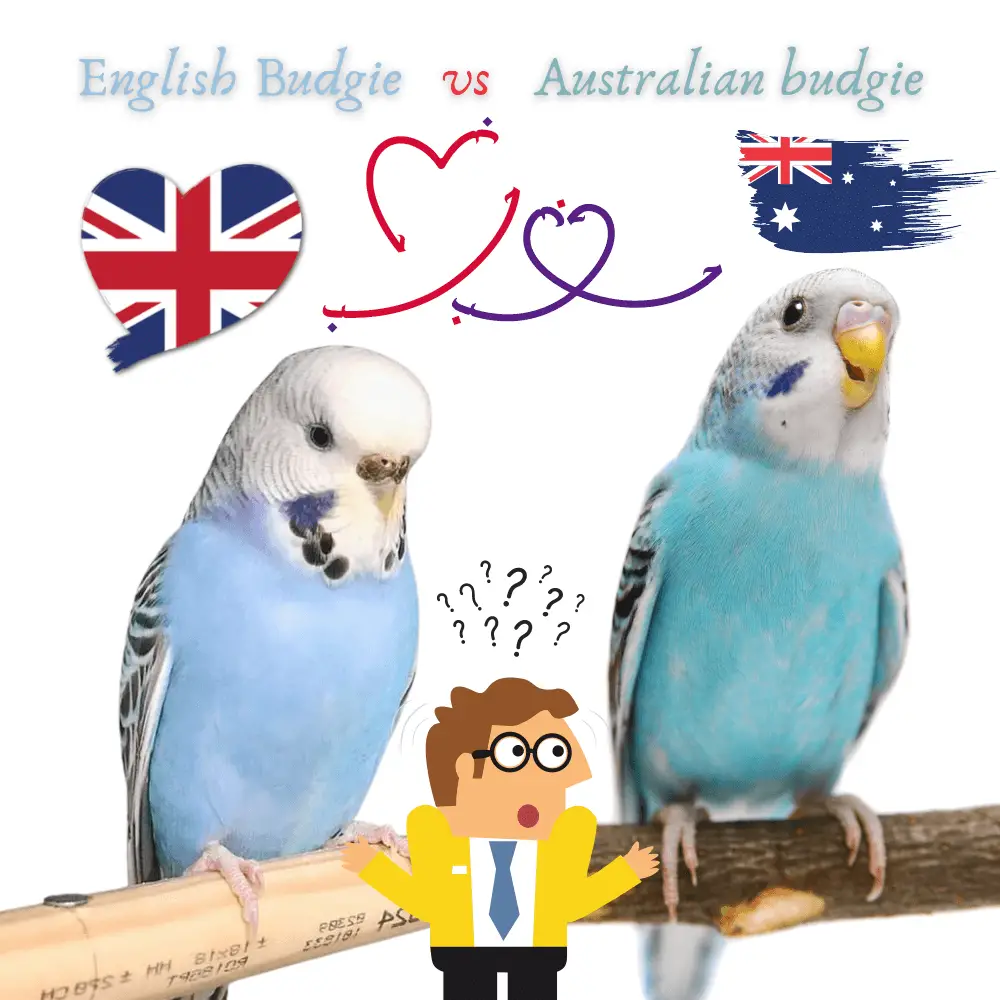English Budgie vs Australian budgie: With much to say about English budgies and little about their ‘wild’, ‘Australian’, or ‘American’ equivalent, it’s best to make their variations very clear.
Budgie personality
The Australian Budgie, very common, is very active and is no longer as easy to tame as an English budgie. The calm nature of an English parakeet makes it easier to teach. Additionally, English parakeets are loud compared to their European counterparts. You will usually find them screaming, clicking, and even howling when alarmed.
On the other hand, English budgies are rather quiet and have a serious tone which also attenuates their sounds. You can hold one and your acquaintances wouldn’t notice, but it’s no longer an Australian parakeet!
Budgie Appearance
For starters, an English parakeet’s feathers are longer and fluffier than those of wild parakeets. However, the coloring of their feathers is more mentioned. Their feathers are the shiniest compared to those of the Australian parakeets.
The difference will become even more evident with the complexity of feather coloration mutations. Also, they have a larger head, and in a few breeds, they are covered in fluffy feathers that resemble an Eskimo hat. Finally, you can also grab an English parakeet with barb-like feathers around its neck.
Size of budgie

This item should have been the most important because it’s usually what you know first of these two birds. An English budgie can weigh more than twice as much as an Australian budgie. She is also taller and a bit longer. This is all due to their selective breeding for exhibitions.
Budgie Lifespan
Australian parakeets are known to stay longer than English parakeets. Although this is no longer usually the case, the average lifespan of an English budgie is five to seven years, while that of its Australian counterpart is seven to twelve years. With proper care, English parakeets can live longer and with fewer fitness-related headaches.
Budgie Diet
American Parakeets should be fed a balanced diet that includes a good mix of seeds, green vegetables, wholemeal bread, pasta, and pellets.
A mixture of parakeet seed with 25% canary seed is good and fresh vegetables are very important. In this case, sunflower sprouts and cooked carrots are good options.
Also, they are given cuttlebones as a calcium supplement, especially when their beaks begin to grow. This is noticeable when they chew everything they see.
Budgie temperature
Birds should be kept in a room with an optimum temperature of around 60-70 degrees Fahrenheit. In addition, it should not fall below 40 degrees.
Anything hotter or colder than that can cause heat stroke or hypothermia in these feathered friends.
In the most extreme cases, they should only be exposed to a maximum temperature variation of 10 degrees over a 24-hour period.
Budgie Cage cleaning
This is an essential routine that every parakeet owner should perform several times a week. Without regular cleaning, a pet parrot’s lifespan will be cut short and the English parakeet is no different.
It is best to get a parrot cage with a grate that filters waste from the main cage for an English parakeet. Otherwise, you will need to clean the cage daily.
Likewise, perches and any solid objects in the cage should be thoroughly cleaned. This reduces the chances of an English parakeet contracting diseases. Also, perches should be changed every few months if they are very dirty.
Budgie Toys
Parakeets are generally playful and social birds.
So if you have one, you should be prepared to buy toys to keep it alive!
Their favorite types of toys are beads and they like to swing on perches. But you need to make sure to change the position of the toys from time to time so that they don’t get bored.
Budgie bath
The hygiene of Australian and English parakeets cannot be overemphasized. They should also be given a bath 3 to 4 days a week.
To do this, you can place a shallow bowl in the cage and let the bird climb into it and enjoy its bath. However, if the bird does not climb into the cage after a while, you should use a spray bottle to bathe it yourself.
A transparent bottle should be used and placed in an isolated place after use to avoid water contamination.
How much do budgie cost

Prices for budgies generally range from $50 to $90 depending on the mutation of the birds.
So you would expect a budgie with unique colors and patterns to be more expensive than a budgie with more common or simpler patterns.
Budgie health
Today there are many illnesses possible at any time and they cannot be covered here.
The best option for dealing with a parakeet disease is to consult a veterinarian as soon as you notice any irregularities.
The main causes of parakeet diseases are yeast infections. The bird may exhibit symptoms such as vomiting, listlessness, loose droppings, weight loss, etc.
There are also other problems like parrot fever, gastrointestinal diseases, sour crops, etc.
Additionally, parakeets develop tumors as they age.
The main way to help these birds is to maintain good hygiene and be careful about the breeders you plan to buy one from.
Should you buy one?
Budgie parakeets generally are a great choice if you want less noise and a single bird (although they can also be kept in pairs or groups).
However, they tend to have a relatively short lifespan for the avian world.
Proper care requires being prepared to maintain good nutrition and hygiene and providing plenty of toys.
Australian budgie vs English budgie
SOURCE: Feather Beautiful

